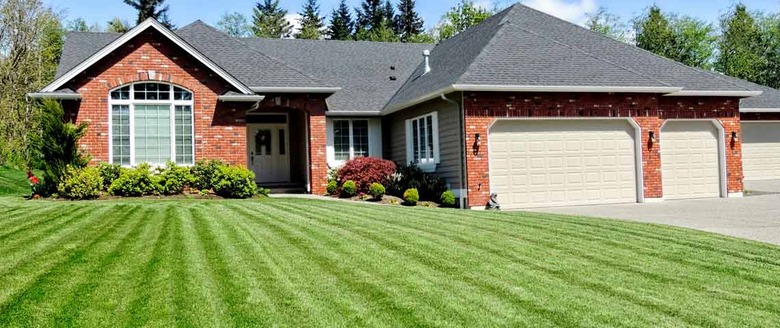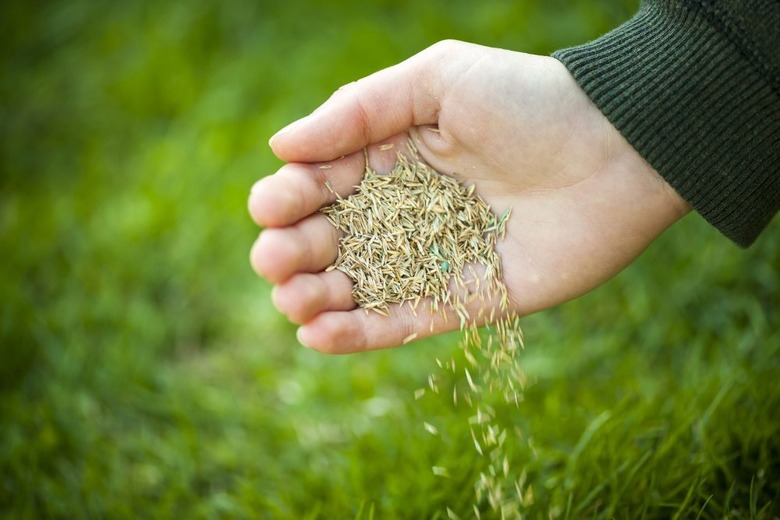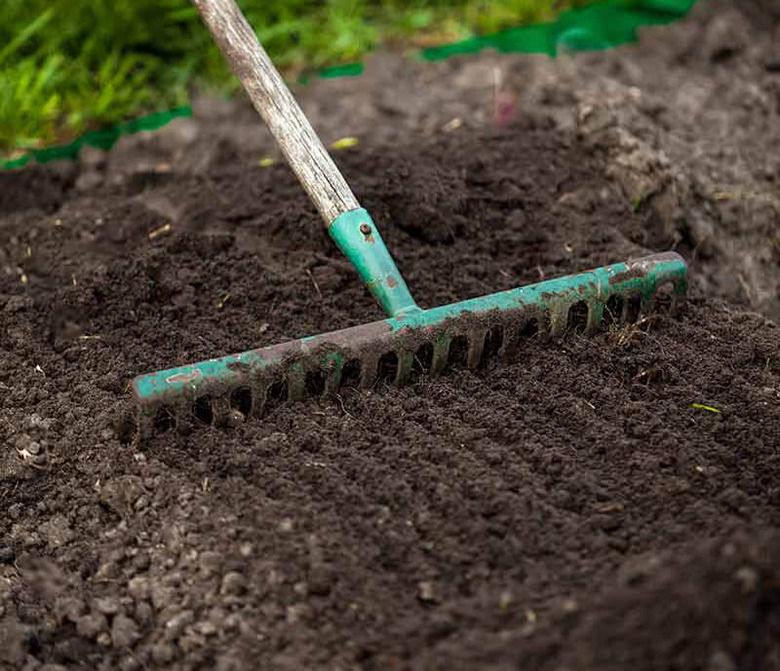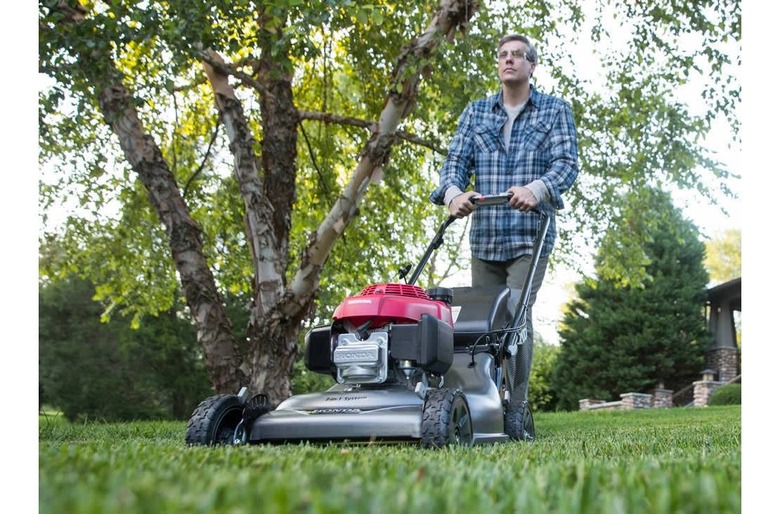How To Plant Grass Seed
We may receive a commission on purchases made from links.
A healthy lawn is more than just an attractive addition to your landscape. By trapping carbon dioxide and releasing oxygen, a well-maintained lawn improves air quality, and the grass roots improve soil structure, trap rainwater and counteract erosion. Not to mention that grass absorbs ambient noise and makes the area around your house more tranquil. A turf-grass lawn is often created by laying strips of purchases sod, but it is easier and much less expensive to sow grass seed. Growing a grass from seed does, however, take some patience, as it will take several months until your lawn is a mature carpet of thick green.
If you're starting a lawn from scratch using see, it's important to choose a seed blend that can thrive in your particular corner of the world. Local climate, soil composition, sun exposure and rainfall are crucial considerations. If you're patching an existing lawn, you'll want to identify the type grass you already have so you can match it.
The most challenging part of seeding a new lawn or repairing an existing one is protecting it from foot traffic until the grass is established. This can take a good 6 weeks or more, so it's prudent to erect a temporary barrier around the seeded area. Plan on keeping this barrier in place for the better part of the first growing season.
Choosing Grass Seed
Choosing Grass Seed
The dozen or so grass varieties that grow throughout North America fall into two general categories: those that thrive in cool climates and those that thrive in warm ones. Cool-season grasses, which include bent grass, rye grass and Kentucky bluegrass, grow well in northern parts of the country, whereas warm-season grasses, such as St. Augustine grass, Bermuda grass and centipede grass, are southern favorites. A few species, such as zoysia and tall fescue, tolerate both warm and cool climates and can thrive in most regions in the United States.
Some grass varieties grow close the ground, some grow tall and some grow in clumps. Blade characteristics can vary from soft and carpet-like to prickly and stiff, and colors can range from deep blue-green to dull gray-green. Different varieties have different watering and light requirements and varying degrees of disease resistance. There's obviously a lot to consider, so to make things easier, seed suppliers usually offer blends.
Seed mixture combine seeds different grass species to capitalize of the strengths and offset the weaknesses of each species.
- Blended-seed mixtures contain different types of the same species to maximize the viability of that species.
- Straight seed packages contain a single variety of seed—usually a warm-season species.
- Lawn repair blends contain grass seed, starter fertilizer and mulch in the same container. The nutrients are selected to be optimal for the particular grass species. You usually apply these straight out of the container.
Tip
The best way to find a blend that can thrive in your area is to purchase it from a local supplier. Local franchises of national garden outlets usually stock local varieties at each of their stores.
Preparing the Ground for Planting
Preparing the Ground for Planting
Grass needs well-draining soil with a pH between 6.0 and 7.6. Test the soil yourself, using a test kit available at any garden center. Treat acidic soil by turning it with lime, and treat alkaline soil by turning in with elemental sulfur. If you suspect the soil to be deficient in nutrients, it's best to take a sample in for a lab test and to amend it with an appropriate lawn-starting fertilizer after you know which nutrients it lacks. This is not an area where you want to guess on what amendments to apply.
- Loosen compacted soil with an aerator, which removes small plugs of earth to allow the soil to breathe. You can also use a tiller or a rake. If the soil is loose and sandy, choose a strain that grows well in that type of soil, such as Zoysia, Bermuda grass or Bahia grass.
- Level the area you intend to plant. Knock down hillocks and fill in holes to reduce slopes to 1 to 2 degrees at most. Water runoff on sloped land will prevent seeds from germinating. If you must plant on a slope, cover the seed with mulch after sowing it to help it retain water.
- Dig up and remove clumps of old grass, weeds and any other unwanted growth. Avoid using weedkillers and other chemicals, which can linger in the soil and prevent the grass from growing.
- Rake the top layer of soil to loosen it just prior to planting.
Sowing the Seed
Sowing the Seed
You technically could walk over the area to be seeded and toss the seeds in every direction with your hand like Johnny Appleseed, but that wouldn't be very efficient. To ensure even grass coverage, you want the seed density to be about 16 seeds per square inch. Any less than that results in bare areas, and if the density is higher, the grass shoots will crowd each other out as they grow, and that also results in bare areas.
It's better to use one of two common seed broadcasting tools. A drop spreader consists of an open trough on wheels, and it drops the seeds straight onto the ground. A rotary spreader flings seeds in a 360-degree arc as you carry or wheel it over the area. The rotary spreader a great tool for very large areas, but it isn't as accurate as a drop spreader, which is the tool you should probably choose. When using a lawn repair product to reseed a bare patch in an existing lawn, you can usually just shake the seed directly from the container.
- Seed the perimeter of the area first, then work your way toward the center. This approach is best for ensuring even coverage over the entire area to be seeded.
- Lightly rake the soil to cover the seed with 1/4 inch of topsoil.
- Cover seeds in poor soil or areas with full sun with a thin layer of mulch to help retain moisture and keep the seeds in place.
- Finish up by watering lightly. Spray enough water to moisten the top 1/2-to 1 inch of soil. Stop watering when the water starts to pool.
Nursing Your Lawn to Maturity
Nursing Your Lawn to Maturity
Once the initial seeding is complete, the lawn needs daily watering at least until the blades grow to a height of 2 inches or so. In some sunny spots, the grass may need water twice or even three times a day, depending on the variety. Check the watering requirements on the seed container, water lightly and avoid saturating the ground.
When the grass has reached a height of about 3 inches, it's ready for the first mowing. Set the mower height to remove no more than 1/3 the height of each blade, and make sure the blade is sharp to avoid stressing the grass by tearing it out instead of cutting it cleanly. Avoid spreading weed control chemicals until after the third mowing.
Fertilize cool-season lawns about 8 weeks after seed germination. Warm-season grasses won't need fertilizer until the following spring. Keep the grass healthy by watering and fertilizing it regularly after it has become established.



